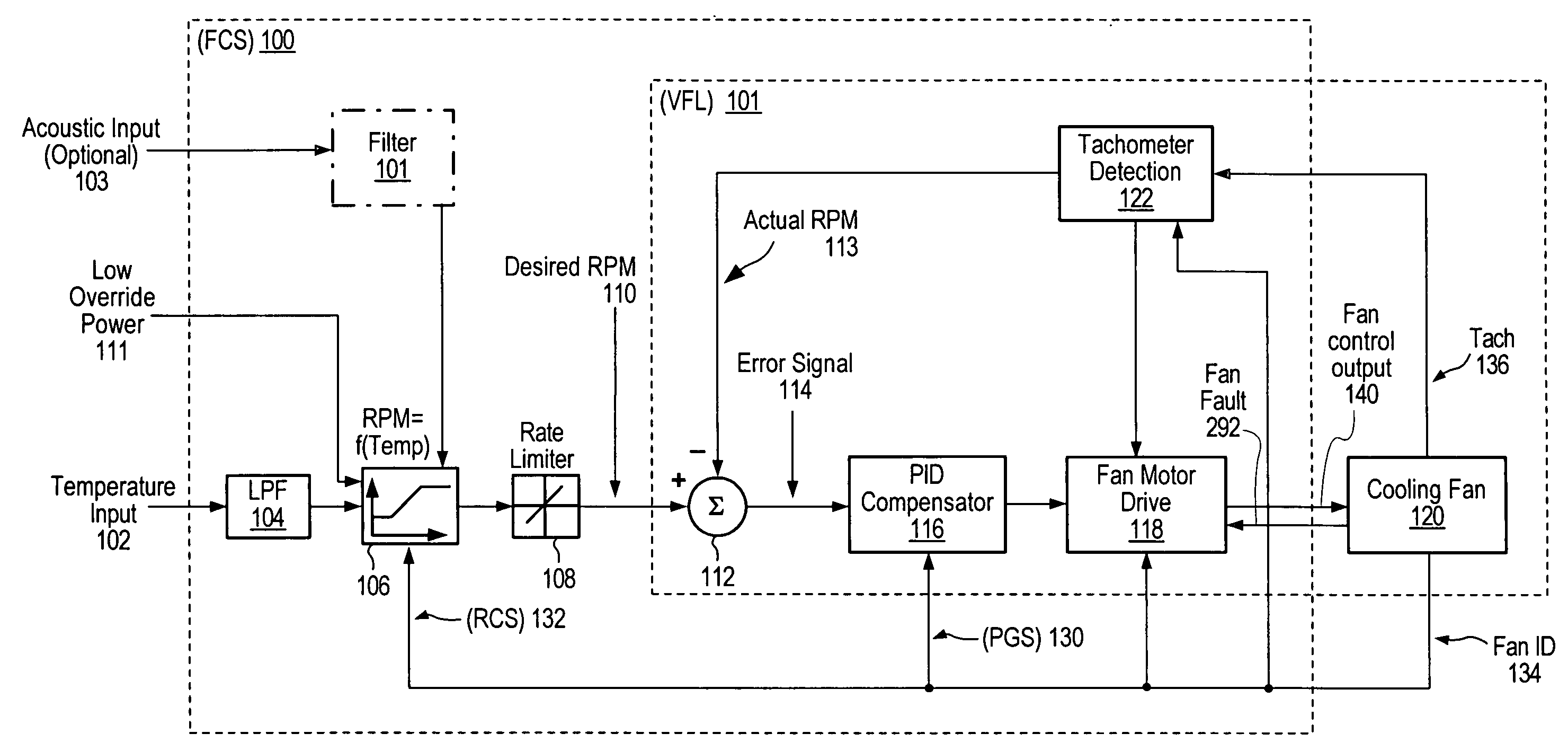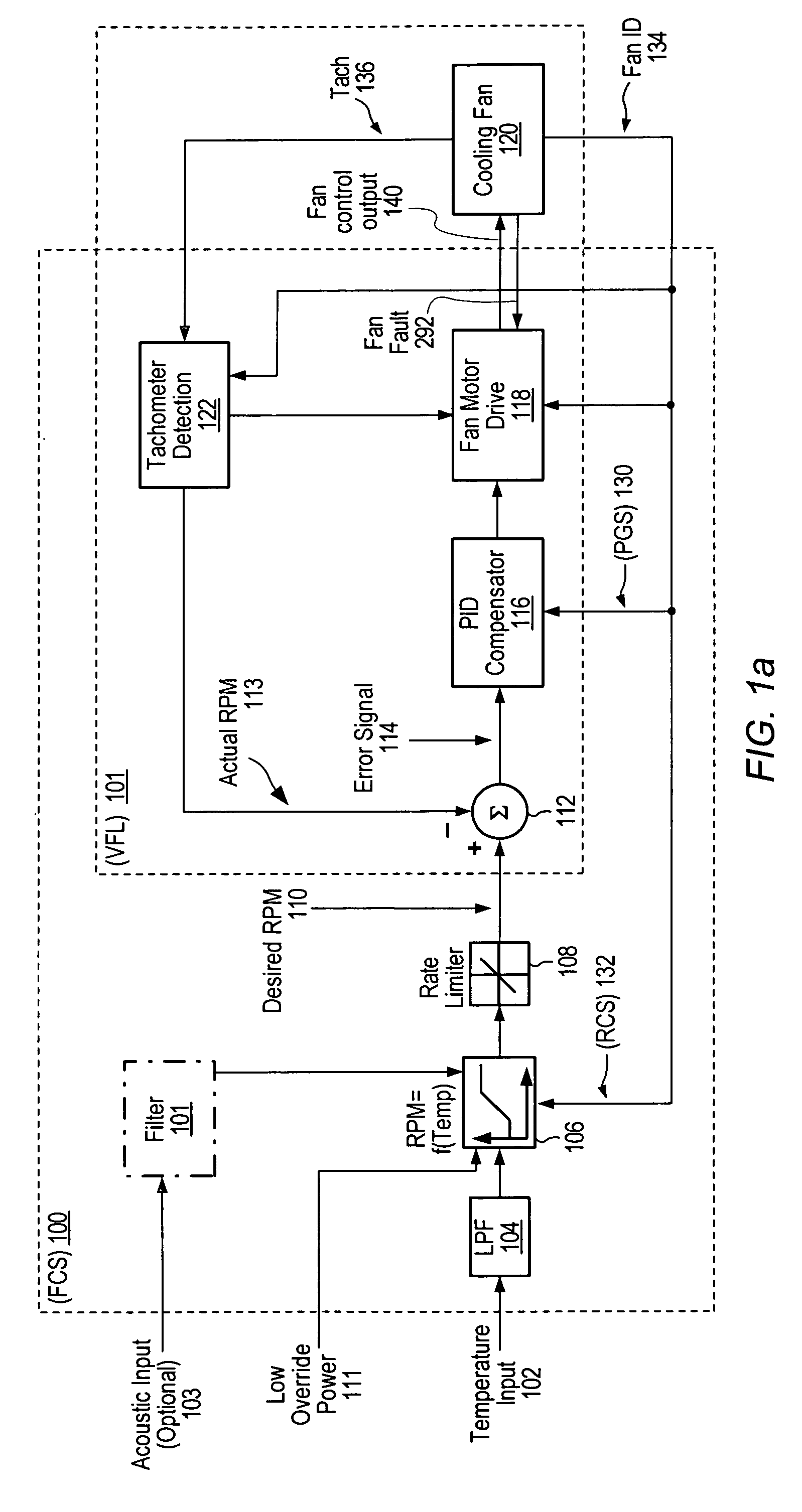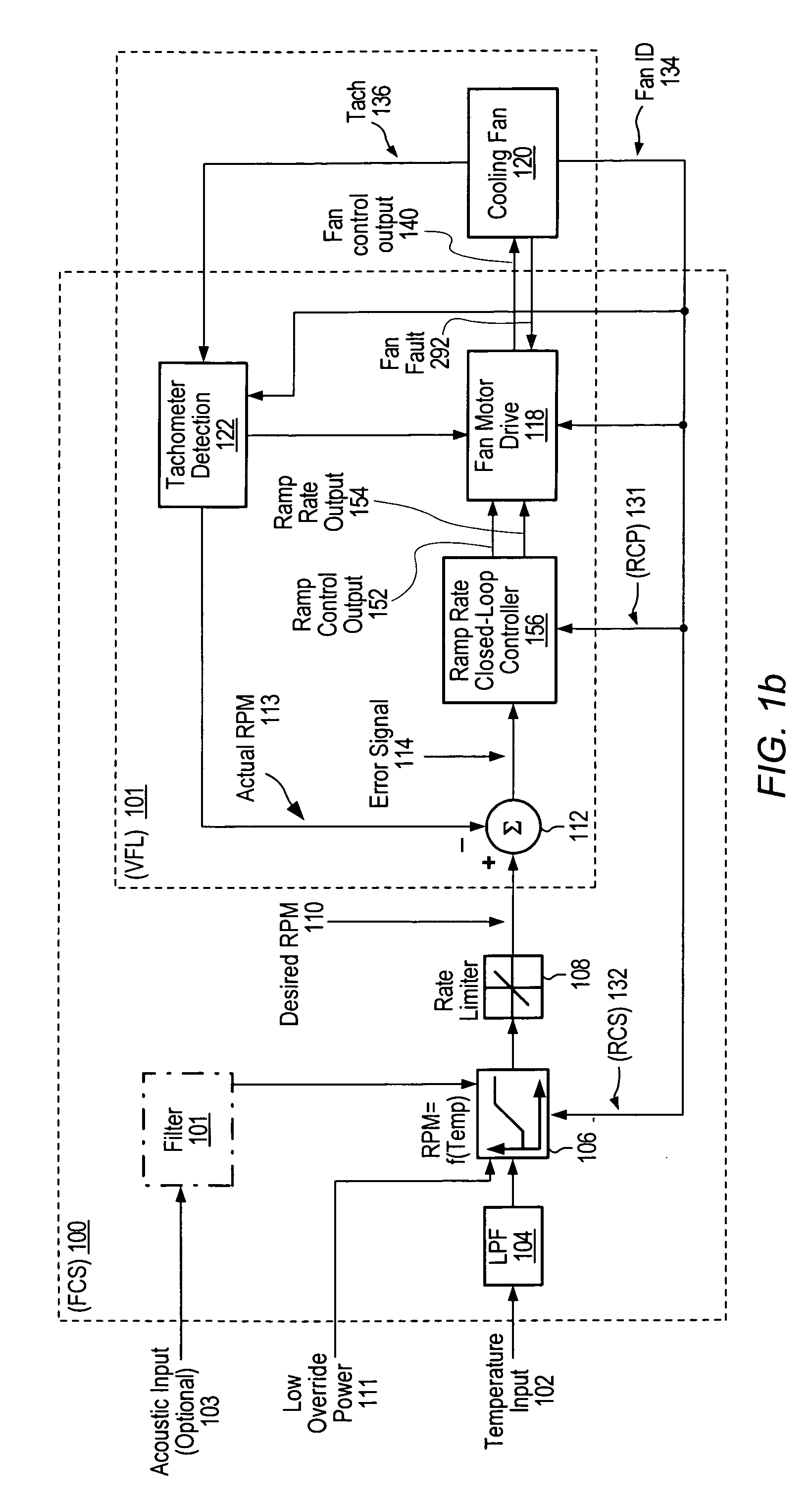Adaptive controller for PC cooling fans
a technology of adaptive controller and cooling fan, which is applied in the direction of electric controller, motor/generator/converter stopper, dynamo-electric converter control, etc. it can solve the problems of increasing complexity and cost of cooling fans, tight fan specifications, and difficulty in obtaining different fans from multiple fan vendors. achieve the effect of reducing the complexity and cost of existing four-wire cooling fans, reducing the cost of a fan configured, and facilitating the removal of circuitry
- Summary
- Abstract
- Description
- Claims
- Application Information
AI Technical Summary
Benefits of technology
Problems solved by technology
Method used
Image
Examples
Embodiment Construction
[0027]As used herein, a “controller” may mean a programmable microcontroller capable of executing code, or a hardware circuit configured to execute a specified function or set of functions and / or algorithms, or a combination of both. In some embodiments, a controller may mean a microcontroller adapted to execute a variety of specified algorithms, or a hardware circuit implementing a finite-state machine designed to perform the tasks required by the specified algorithms.
[0028]FIG. 1a shows a functional block diagram of one embodiment of a fan control system (FCS) 100. In this embodiment, actual temperature input 102 is sampled at the front end of FCS 100, and filtered with a low pass filter (LPF) 104 to smooth out noise and large temperature fluctuations. The filtered sampled temperature reading signal may then be provided as input to an RPM-versus-temperature profile function (RTPF) 106 that may generate and output a fan RPM value corresponding to the input temperature reading. In o...
PUM
 Login to View More
Login to View More Abstract
Description
Claims
Application Information
 Login to View More
Login to View More - R&D
- Intellectual Property
- Life Sciences
- Materials
- Tech Scout
- Unparalleled Data Quality
- Higher Quality Content
- 60% Fewer Hallucinations
Browse by: Latest US Patents, China's latest patents, Technical Efficacy Thesaurus, Application Domain, Technology Topic, Popular Technical Reports.
© 2025 PatSnap. All rights reserved.Legal|Privacy policy|Modern Slavery Act Transparency Statement|Sitemap|About US| Contact US: help@patsnap.com



